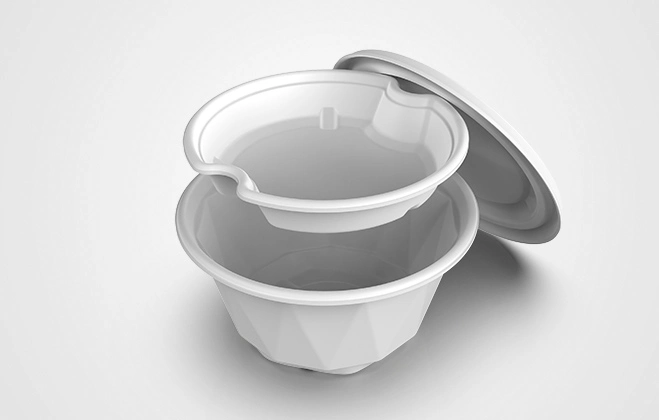The basic physical properties of polylactic acid (PLA) plastic are similar to those of petrochemical synthetic plastics, which means that PLA plastic can be widely used to manufacture various application products. PLA also has good gloss and transparency, comparable to the film made of polystyrene, which cannot be provided by other biodegradable products.
Advantages of PLA plastic: 100% biodegradable, compostable, and eco-friendly material
PLA plastic is a type of new biodegradable material made from renewable plant resources (such as corn) extracted starch raw materials. The starch raw materials are converted into glucose through saccharification, and then high-purity lactic acid is produced through glucose fermentation with certain strains. Finally, certain molecular weight PLA plastic is synthesized through chemical synthesis. It has good biodegradability and can be completely degraded by microorganisms in nature, ultimately producing carbon dioxide and water, without polluting the environment. This is very beneficial to environmental protection and is recognized as an eco-friendly material.
Ordinary plastics are still treated by incineration, cremation, and other methods, which cause a large amount of greenhouse gas emissions into the air. However, PLA plastic is buried in the soil for degradation, and the carbon dioxide produced directly enters the soil organic matter or is absorbed by plants, without being emitted into the air. It does not cause greenhouse effects. Even if PLA plastic is incinerated, the smoke emitted is less than that of oil-based plastics.
Advantages of PLA plastic: Good mechanical and physical properties
PLA is suitable for various processing methods such as blow molding and thermoplastic molding. It is used to process various disposable plastic utensils from industrial to civil use, such as tableware, spoons, plates, plastic products, food packaging, non-woven fabrics, industrial and civil fabrics. It can also be further processed into agricultural fabrics, health care fabrics, wet wipes, sanitary products, outdoor UV-resistant fabrics, tent fabrics, floor mats, etc.
The physical properties of PLA plastic are as follows: density: 1.20-1.30 kg/L; melting point: 155-185°C; intrinsic viscosity: 0.2-8 dL/g; glass transition temperature: 60-65°C; thermal conductivity: 0.025 λ(w/m*k).
Advantages of PLA plastic: Good compatibility and degradability
Due to its good compatibility and degradability, PLA plastic also has a wide range of applications in the medical field. For example, PLA can be used to produce disposable infusion equipment, non-removable surgical suture threads, and low-molecular-weight PLA as a drug release packaging agent.

 English
English 日本語
日本語 한국어
한국어 français
français Deutsch
Deutsch Español
Español русский
русский português
português العربية
العربية ไทย
ไทย Malay
Malay





















